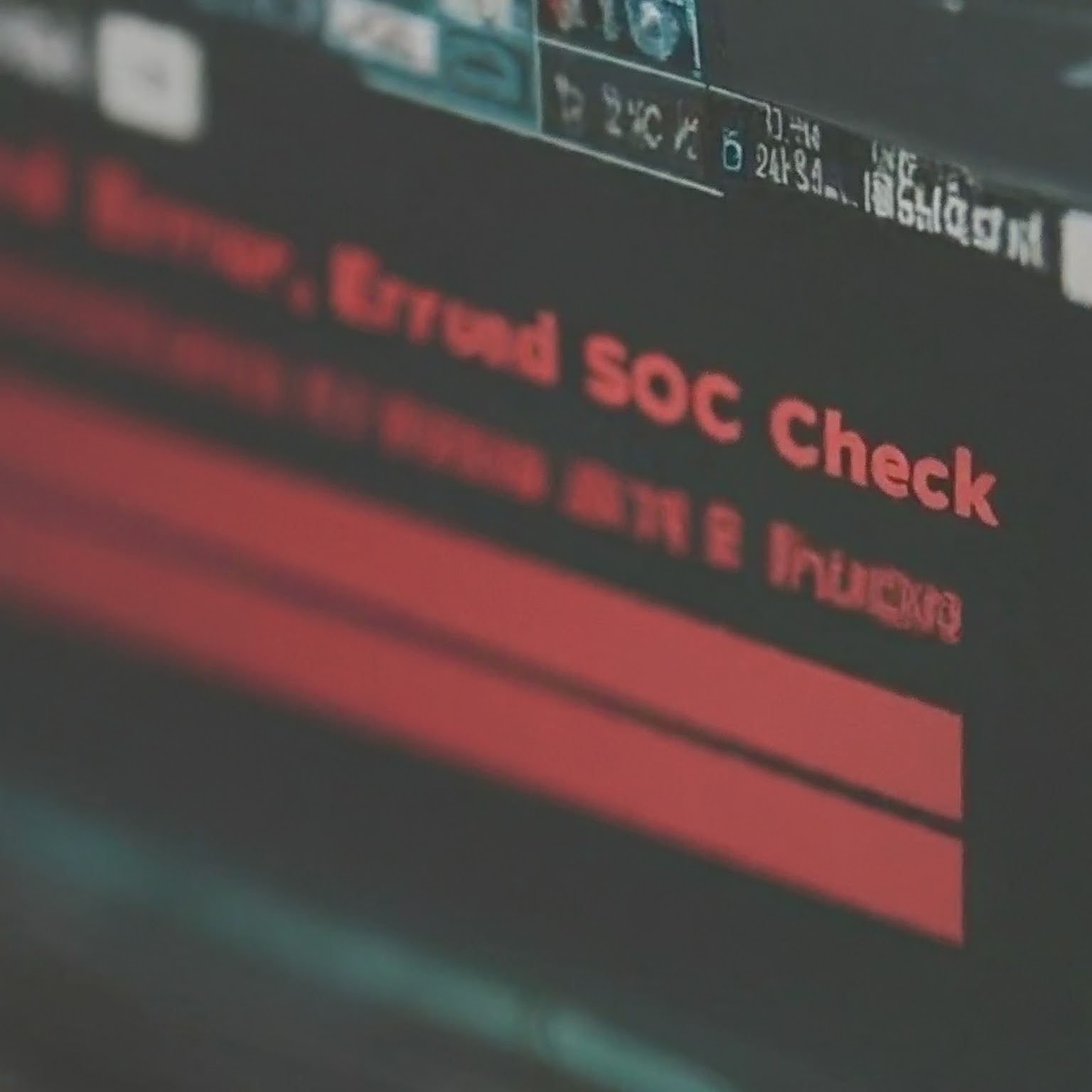Before delving into the complexities of a failed SOC check, it’s crucial to understand what an SOC is. SOC, in this context, typically refers to a System on a Chip, a miniaturized integrated circuit that incorporates the core components of a computer system onto a single chip. An SOC check, therefore, is a verification process to ensure the integrity and functionality of this critical component.

Common Scenarios of a Failed SOC Check
The term “failed SOC check” can encompass a variety of issues, depending on the specific context. Here are some common scenarios:
1. Mobile Device Issues
Device Compatibility: Some apps or services require specific SOC configurations for optimal performance. A mismatch between the device’s SOC and the app’s requirements can lead to a failed SOC check.
Hardware Malfunction: A defective or damaged SOC can result in a failed SOC check, preventing the device from booting up or functioning correctly.
Software Glitches: Software bugs or conflicts can sometimes interfere with the SOC check process, causing unexpected errors.
2. Computer System Issues
Driver Problems: Outdated or corrupted device drivers can disrupt the communication between the operating system and the SOC, leading to a failed SOC check.
Overheating: Excessive heat can damage the SOC, resulting in a failed SOC check and system instability.
Power Supply Issues: Insufficient power supply can affect the SOC’s performance, leading to errors and crashes.
3. Network-Related Issues
Connectivity Problems: A weak or unstable internet connection can interfere with online services that rely on SOC information, resulting in a failed SOC check.
Server Issues: Problems with the servers of the service you’re using can cause temporary or persistent failed SOC checks.
Troubleshooting a Failed SOC Check
Addressing a failed SOC check requires a systematic approach to pinpoint the underlying cause. Here are some general troubleshooting steps:
1. Check for Software Updates
Device Firmware: Ensure your device’s operating system and firmware are up-to-date.
App Updates: Keep all apps and software installed on your device updated to their latest versions.
2. Verify Hardware Functionality
Physical Inspection: Check for any visible damage to the device.
Diagnostic Tests: Run hardware diagnostic tests to identify potential hardware issues.
3. Check Network Connectivity
Internet Connection: Verify that you have a stable internet connection.
Router/Modem: Restart your router or modem to resolve temporary network glitches.
4. Clear Cache and Data
App Cache: Clear the cache and data of the app experiencing the failed SOC check.
Device Cache: In some cases, clearing the device’s cache might help.
5. Contact Support
If the issue persists, reach out to the device manufacturer, app developer, or network provider for further assistance. Provide detailed information about the problem and any troubleshooting steps you’ve already taken.
Specific Examples of Failed SOC Checks
To illustrate the concept further, let’s explore some specific examples of failed SOC checks across different domains:
Mobile Gaming
In mobile gaming, a failed SOC check can prevent a game from launching or running smoothly. This often occurs when the game’s requirements exceed the capabilities of the device’s SOC.
Cryptocurrency Mining
Cryptocurrency mining relies heavily on powerful hardware, including GPUs and CPUs. A failed SOC check in this context might indicate a hardware failure or incompatibility with the mining software.
Internet of Things (IoT) Devices
IoT devices often have limited processing power, and a failed SOC check can hinder their functionality. This might manifest as connectivity issues, device unresponsive, or unexpected behavior.
Prevention and Mitigation
While it’s impossible to prevent all failed SOC checks, there are steps you can take to minimize their occurrence:
Regular Maintenance: Keep your devices and software up-to-date.
Proper Care: Handle devices with care to avoid physical damage.
Monitoring System Health: Use system monitoring tools to detect potential issues early on.
Backup Data: Regularly back up your important data to protect against data loss in case of hardware failure.
Conclusion
Understanding the concept of a failed SOC check is essential for troubleshooting various technical issues. By following the steps outlined in this article, you can effectively diagnose and resolve many problems related to SOC failures. Remember to seek professional assistance if necessary.


